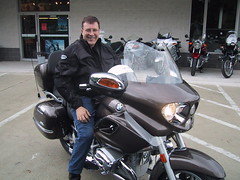I found a good doctor, a neurosurgeon, who knew that I wanted to be fixed and not scared about all the details. His first plan of attack was some micro surgery to eliminate the sciatica problems. He told me to plan on a five-day hospital stay.
Friends at work, who had recently had back surgery, clued me into things to do to make it go better. I got a grabber to pick things up off the floor without bending over, got all my laundry and shopping done and generally made sure I would be able to live at home for a couple of weeks post-op.
Washington Hospital Center was about as good as it gets. In pre-op, a nurse named Aggy (real name Angie) instructed me where and how to change into the gown. When I returned to climb onto the gurney, I was very pleasantly surprised that the blanket she brought to cover me had been pre-warmed in a heated cabinet. Her good humor and attention to details set the tone and forestalled anxieties.
The operation started about 7:30 and I woke up in post-op at 11:30. There is not much of that I remember, but I enjoyed being rolled through the hospital to my room.
Several people stopped to check on my condition. "Squeeze my fingers," I was told. "Lift your legs. Press down with your toes." ...and so on. After several tests, I could see relief and even some pleasure in their faces from their findings.
The doctor visited and explained to me that they had found things to be more compressed than his own MRI had shown. They did a multiple-level lapinectomy, removing the dorsal bones from several of my vertebrae so that they now resemble a 'U' more so than an 'O' in order to relieve pressure on nerves and my spinal column. I had a six-inch incision in my back held closed by staples and tape. Indeed, I spent five days before going home, and a good thing they didn't discharge me the morning of day four as I developed a fever of 103+ that afternoon.
In hindsight, I'm very impressed with the quality of care I received in post-op and the nurses. Not all of them were very experienced, but the confidence of nurses who I knew to be experienced and quite competent went a long way in dispelling my many anxieties about the trainees. I also appreciated the amount of diversity in the nursing staff. One young nurse was from Trinidad. I enjoyed her accent although I had a difficult time understanding her and communicating with her: difficulties that caused me to feel distrustful needlessly.
The business of learning to get out of bed, learning how to sit, and stand from a sitting position took place over the post-op period. Several friends came to visit. At home, the lessons learned from the occupational therapist were very useful: how to log-roll to the edge of the bed, use my arms to sit-up sideways without bending, then stand up with out bending the back, keeping myself rigidly vertical.
At a follow-up doctor's appointment 11 days later, Dr. Levine removed the staples and answered questions. I learned that there was no limit on how long I stood or sat, but that I needed to take a 15-minute break each hour.
"When can I go back to work?" I asked.
He asked what kind of work I did then told me that I could go back to work the next day if I took it easy.
"When can I start riding my motorcycle again?"
"As soon as you can get off the pain killers," was his answer.
That was Tuesday the 26th. I have not taken a pain killer since. I switched to Advil. The following Saturday, I got a ride from a good riding friend to Bob's BMW to pick up my bike.
From Bob's, in Jessup, Maryland, I rode to Upper Marlboro where a masonic brother was hosting the Grand Lodge's annual crab-fest, and later home. It was a short two rides and I was very cautious about many things. The next night, after resting all of Sunday, I rode to a fair in Columbia, MD to help at the BOB's BMW booth. I didn't know how long I would feel up to it, but was able to sit on my bike when I got tired. I was back in business!
Subscribe to:
Post Comments (Atom)

No comments:
Post a Comment